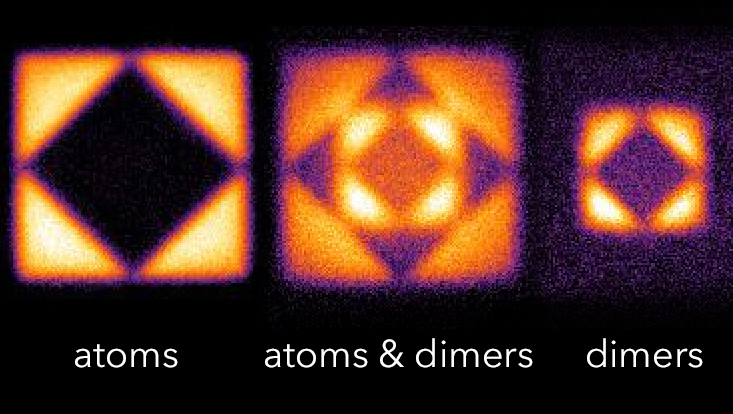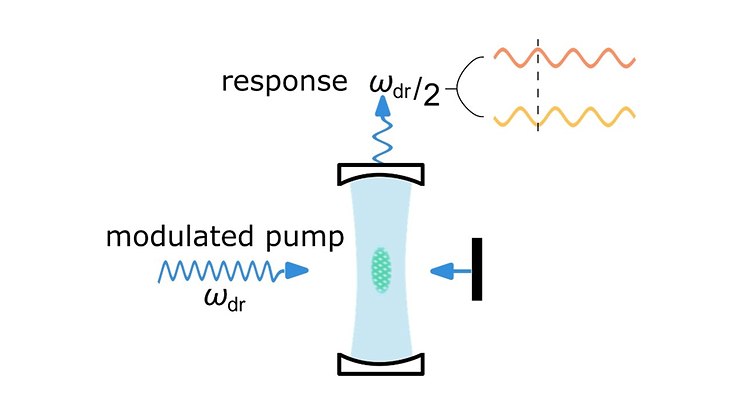Quantum Physics
Imaging exotic dimers
21 March 2023

Photo: AG Hemmerich
Feshbach molecules are pairs of atoms in the last bound state below the dissociation limit. They can be formed with the help of a Feshbach resonance by a fast adiabatic change of the scattering length. To distinguish Feshbach molecules and unpaired atoms in the second Bloch band of an optical lattice, an amazingly simple imaging method was used that has similarities to the technique of mass spectrometry. This enabled us, to precisely measure the lifetimes and binding energies of the exotic dimers.
New forms of superfluidity are expected
These results can serve as a starting point for a series of exciting investigations into unconventional many-body scenarios. It has already been shown that condensed bosonic atoms in the second Bloch band have chiral character and can even possess topologic excitations. If Feshbach molecules composed of fermionic atoms are used instead of bosonic atoms, an extremely interesting new possibility arises. If the initially positive scattering length is adiabatically detuned to negative values with the help of a Feshbach resonance, attractively bound Cooper pairs arise from repulsively bound molecules. New forms of superfluidity with exotic properties beyond conventional BCS theory are then expected.
Ultracold Feshbach molecules in an orbital optical lattice
Yann Kiefer, Max Hachmann, and Andreas Hemmerich
Nature Physics (2023)


